How to Make BBQ Sauce
Updated Sep 10, 2024
Make your own BBQ sauce at home with this easy, Ketchup-based recipe. Making Barbeque sauce from scratch lets you control all the things!
This post may contain affiliate links. Please read our disclosure policy.
Making BBQ sauce at home has become one of my favorite kitchen adventures. Store-bought sauces are handy, but they never quite hit the mark for me (and really, I find them way too sweet!). This barbeque sauce recipe does start with ketchup as the base, but after trying several measurements and seasonings, I landed on smoked paprika, chili powder, a splash of apple cider vinegar, and Worcestershire sauce with a bit of Dijon mustard. If you want to learn how to make BBQ sauce at home from scratch that beats anything you can find in a bottle – I got you!
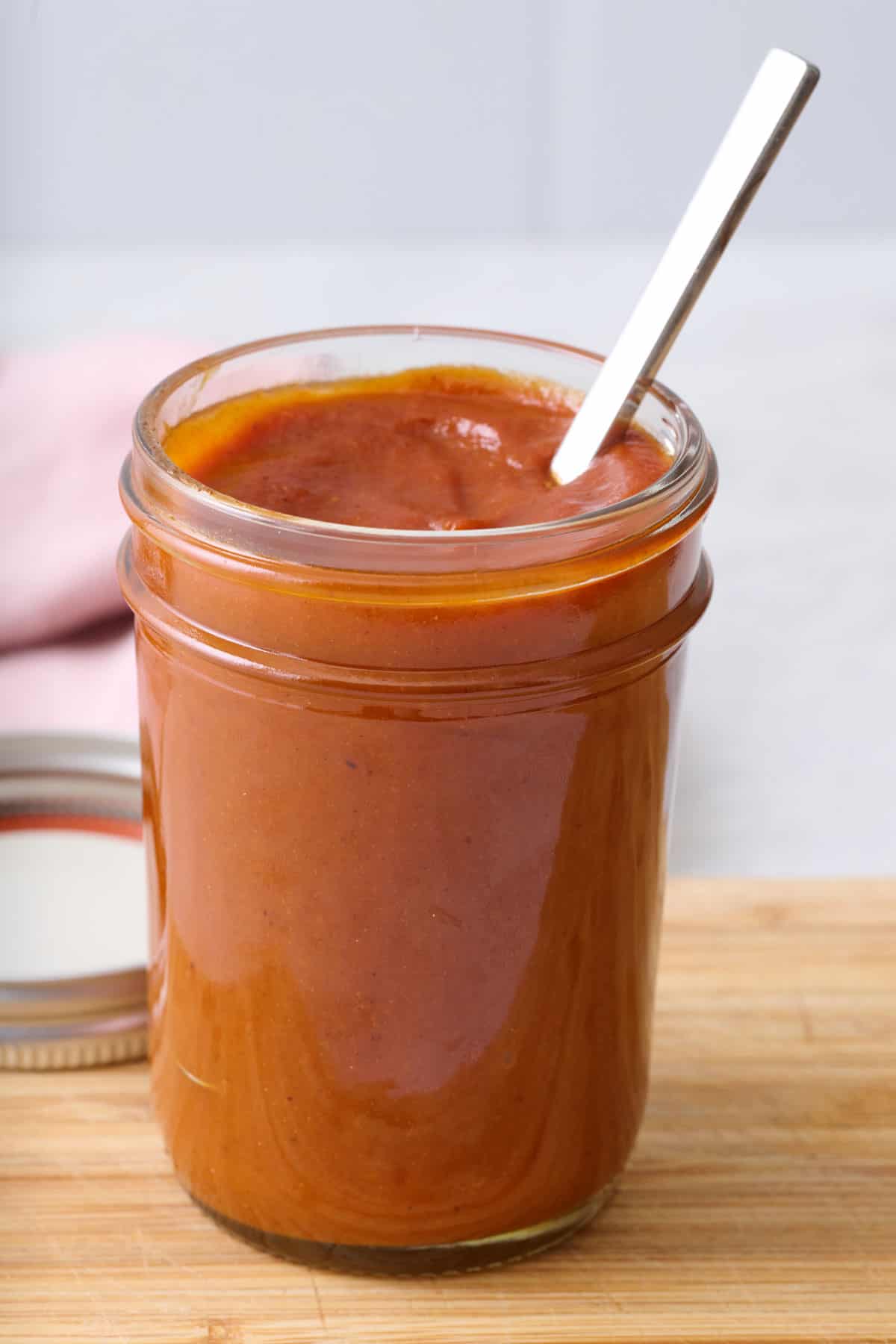
Jump to Section
Why Learn to How to Make Barbecue Sauce
- Customizable – There are as many variations to BBQ sauce as there are home cooks. And that’s the best part about food, right? Making homemade BBQ sauce from scratch allows you to give it your own twist. Are you going Kansas-style, with more sweetness and very thick and sticky? Or do you prefer Texas BBQ sauce with a kick to it? Either way, it’s easy to adjust the seasonings and spices so your taste buds are happy.
- Easy and quick – Made with a few pantry staples and a yellow onion, this homemade BBQ sauce takes less time to make at home than if you were to run to the store to pick up a bottle. That way, you don’t even need to leave the house when you have a hankering for some sweet BBQ flavor.
- Gets better with time – There are very few things in life that age well. Homemade BBQ sauce is one of them. Make it well in advance of your neighborhood cookout or backyard pool party and let it sit in the fridge to allow the flavors to meld together. It’s delicious immediately after making it but irresistibly addicting after it sits a while.
- Goes with everything – Is there anything that BBQ sauce doesn’t go with? I mean, it’s one of those magical condiments that goes great on pizza, in sandwiches, or slathered on grilled meat. It instantly adds moisture and sweet-and-tangy flavor to your food.
Ingredients to Make BBQ Sauce
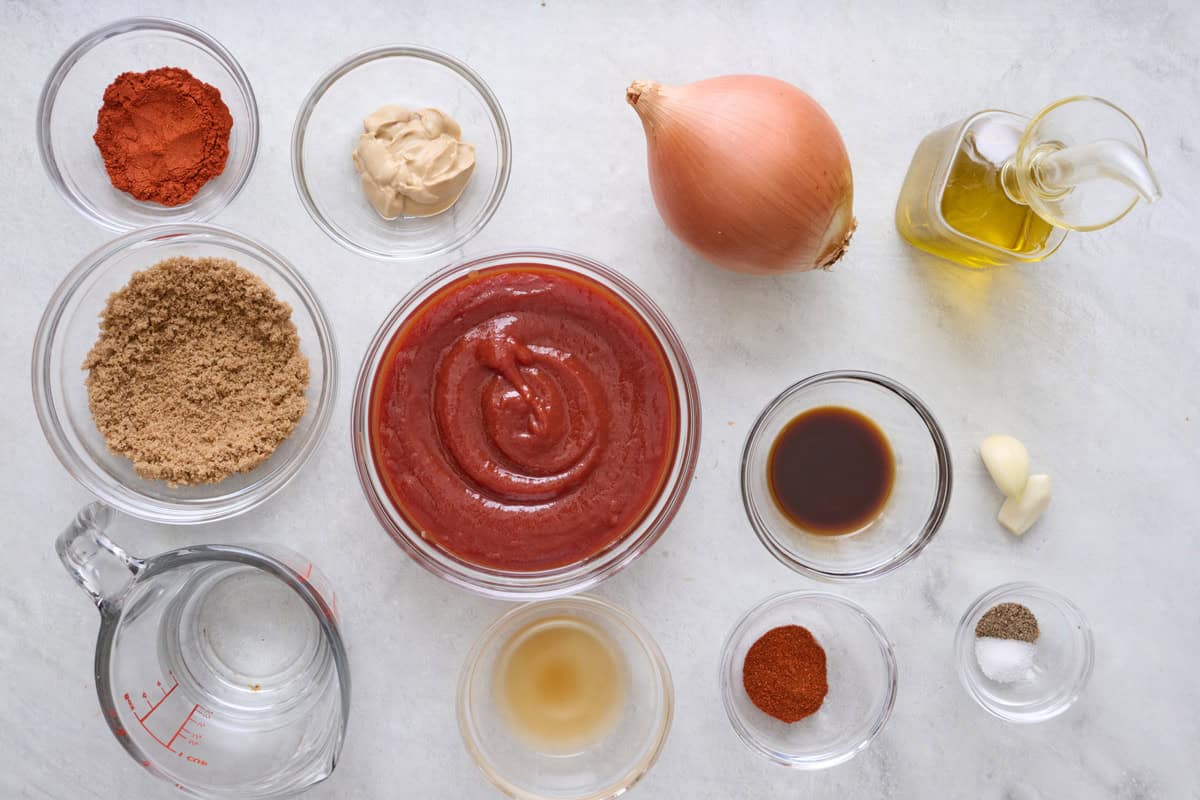
- Avocado oil: Used to cook the onions and garlic and adds healthy fats to the sauce. You can use another mild-flavored cooking oil here.
- Onion and garlic: This golden pair is my secret to making this homemade BBQ sauce out-of-this-world delicious. It makes the difference between ordinary sauce and extraordinary, addicting, can’t-get-enough BBQ sauce.
- Seasonings: Smoked paprika and chili powder are classic BBQ sauce seasonings while salt and black pepper help to round out the overall flavor.
- Ketchup: I like the convenience of using ketchup instead of tomato sauce and tomato paste. Its consistency and texture are perfectly smooth and go well with the rest of the ingredients.
- Apple Cider Vinegar: The acidity in ACV adds a much-needed tanginess to this BBQ sauce.
- Dark Brown Sugar: The brown sugar sweetens things up and balances the acidity and the heat. It helps create a well-rounded flavor profile. But here’s the best part: brown sugar naturally has molasses which also helps the sauce caramelize, thicken, and give a glossy finish.
- Worcestershire Sauce: is another key ingredient in making homemade BBQ sauce that is intensely flavorful. It adds an instant savory flavor that you can’t get anywhere else.
- Dijon Mustard: Like ACV, Dijon mustard adds a slight tanginess and savory notes that gives BBQ sauce its classic taste.
How to Make Barbecue Sauce
Once you try homemade BBQ sauce, there’s no going back to store-bought versions. It starts with cooking onion and garlic to bring out those savory flavors and ends in a rich, velvety sauce processed in a blender. Easy but offers so much flavor!
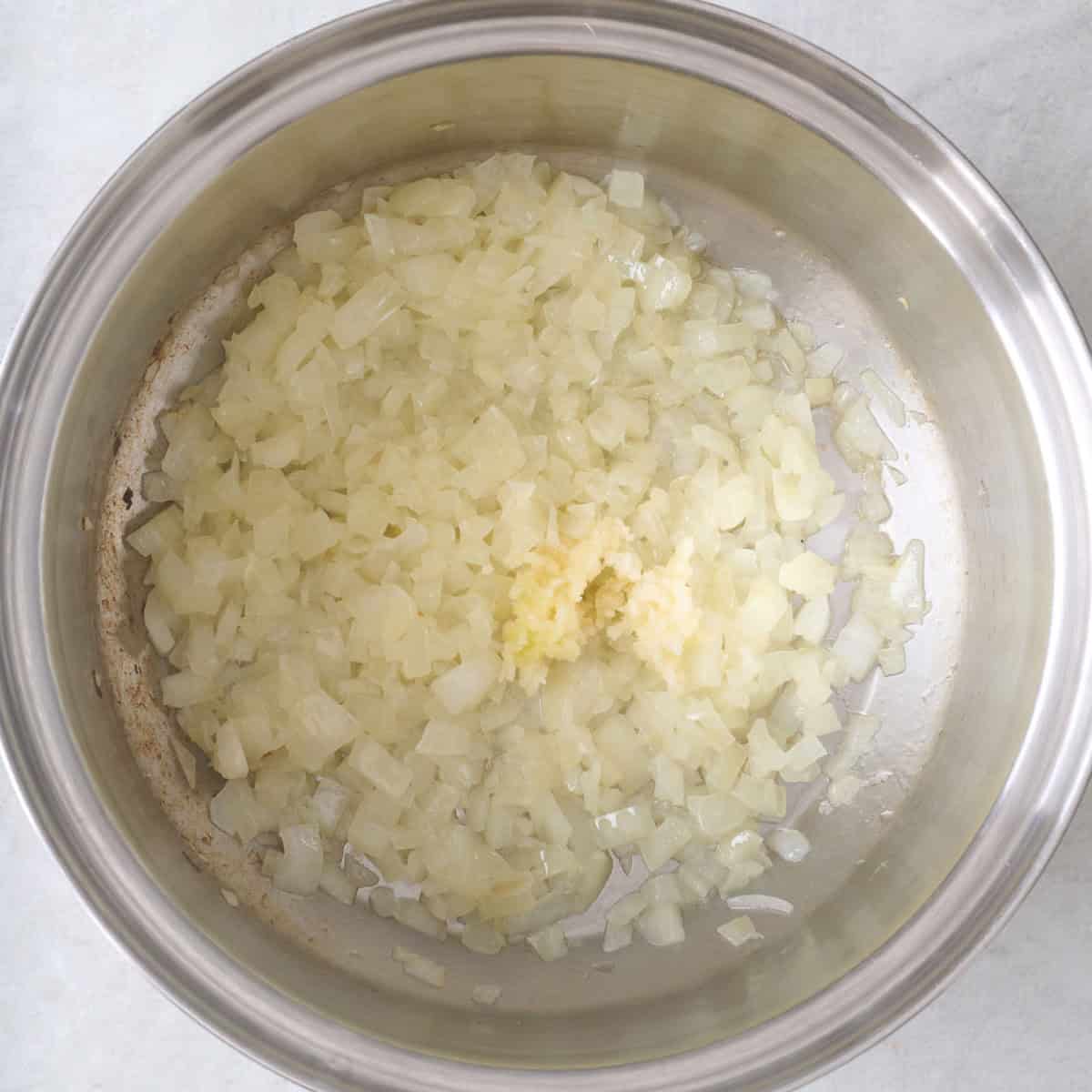
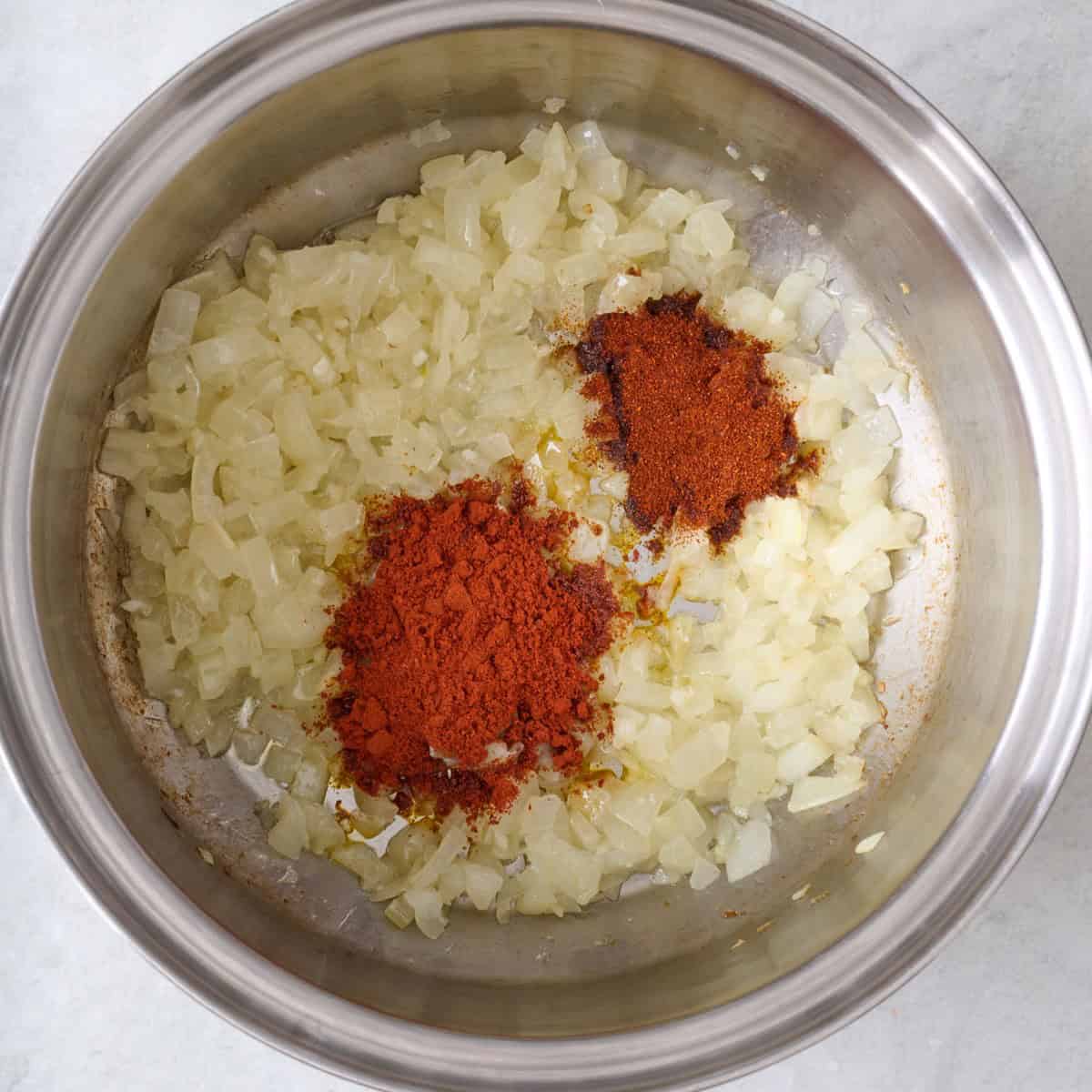
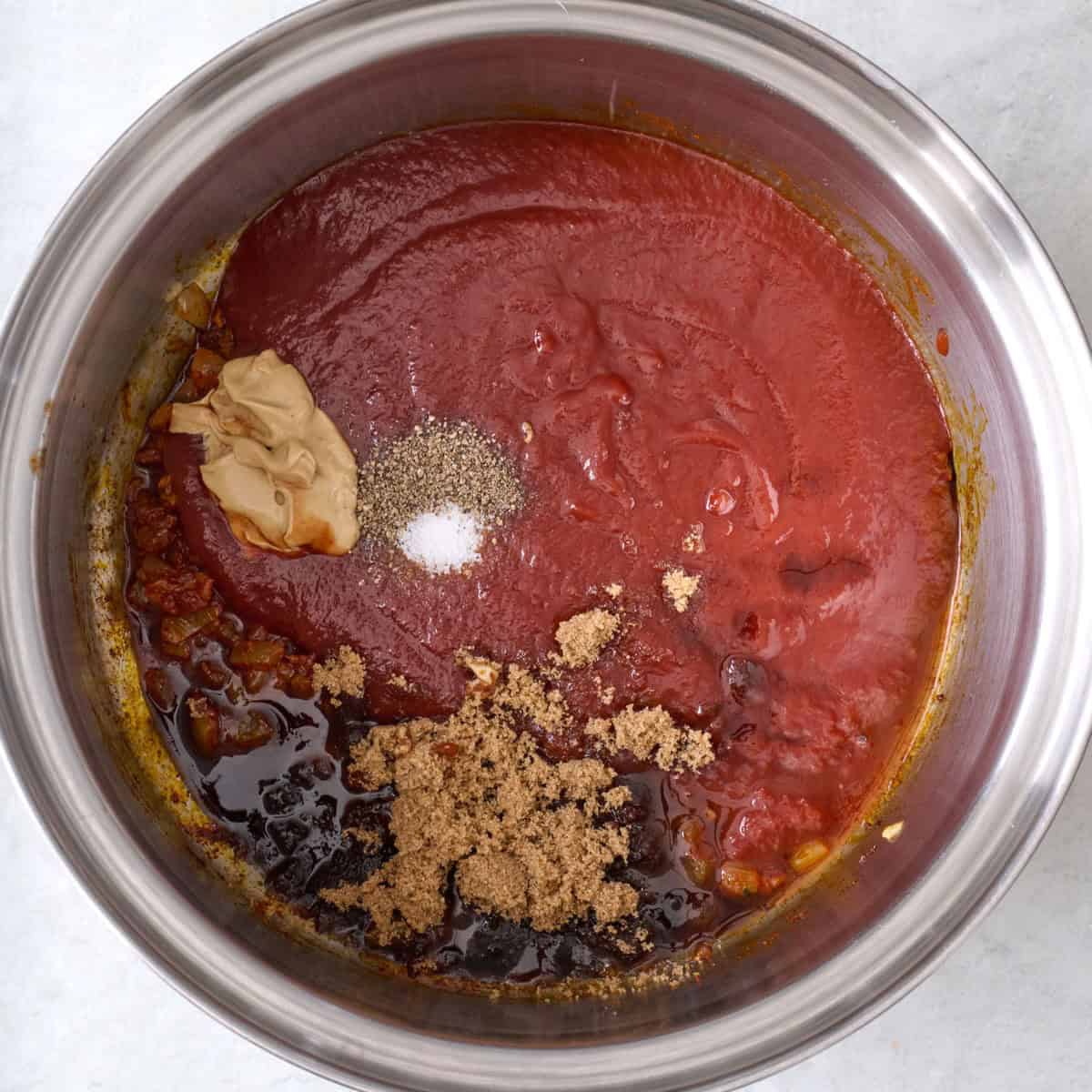
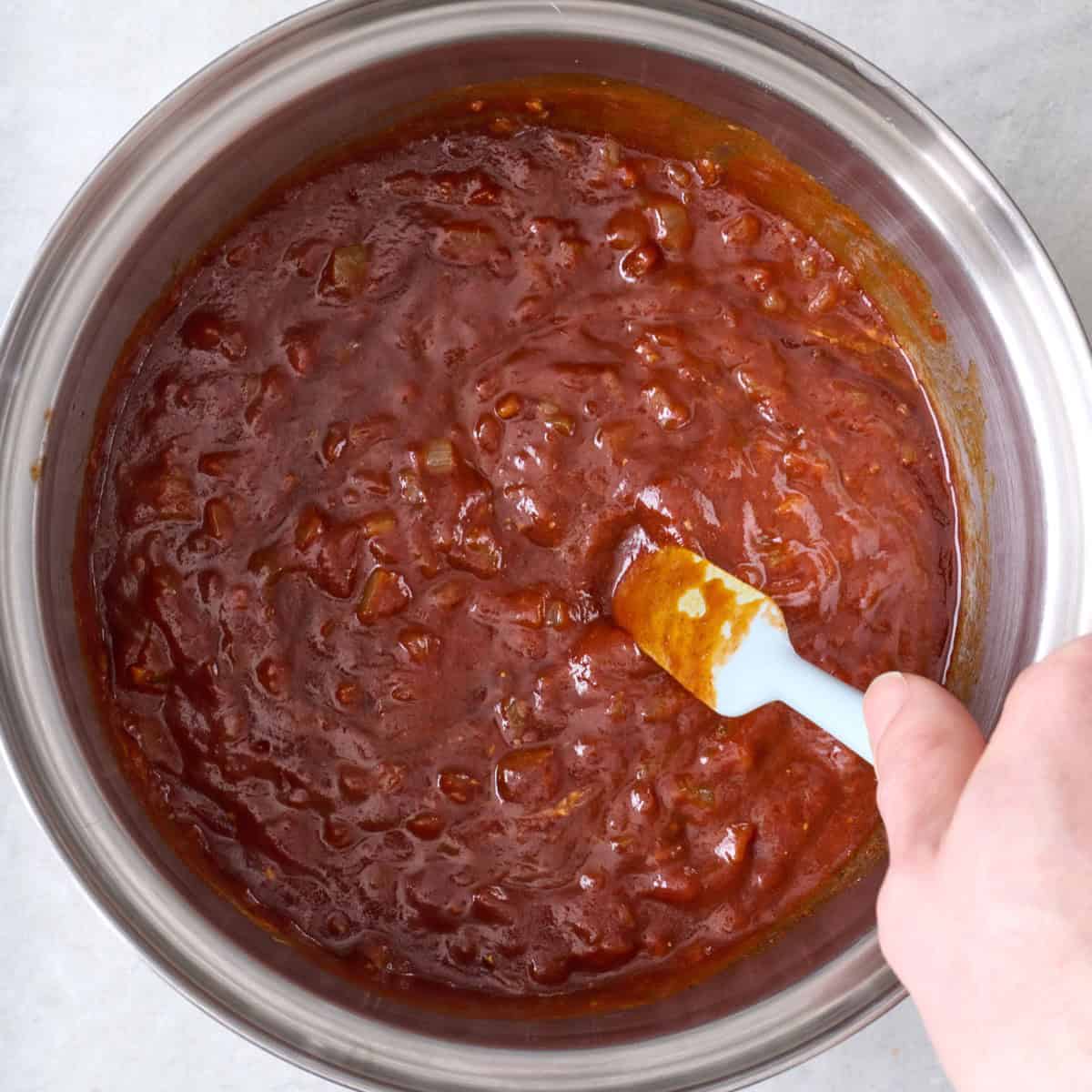
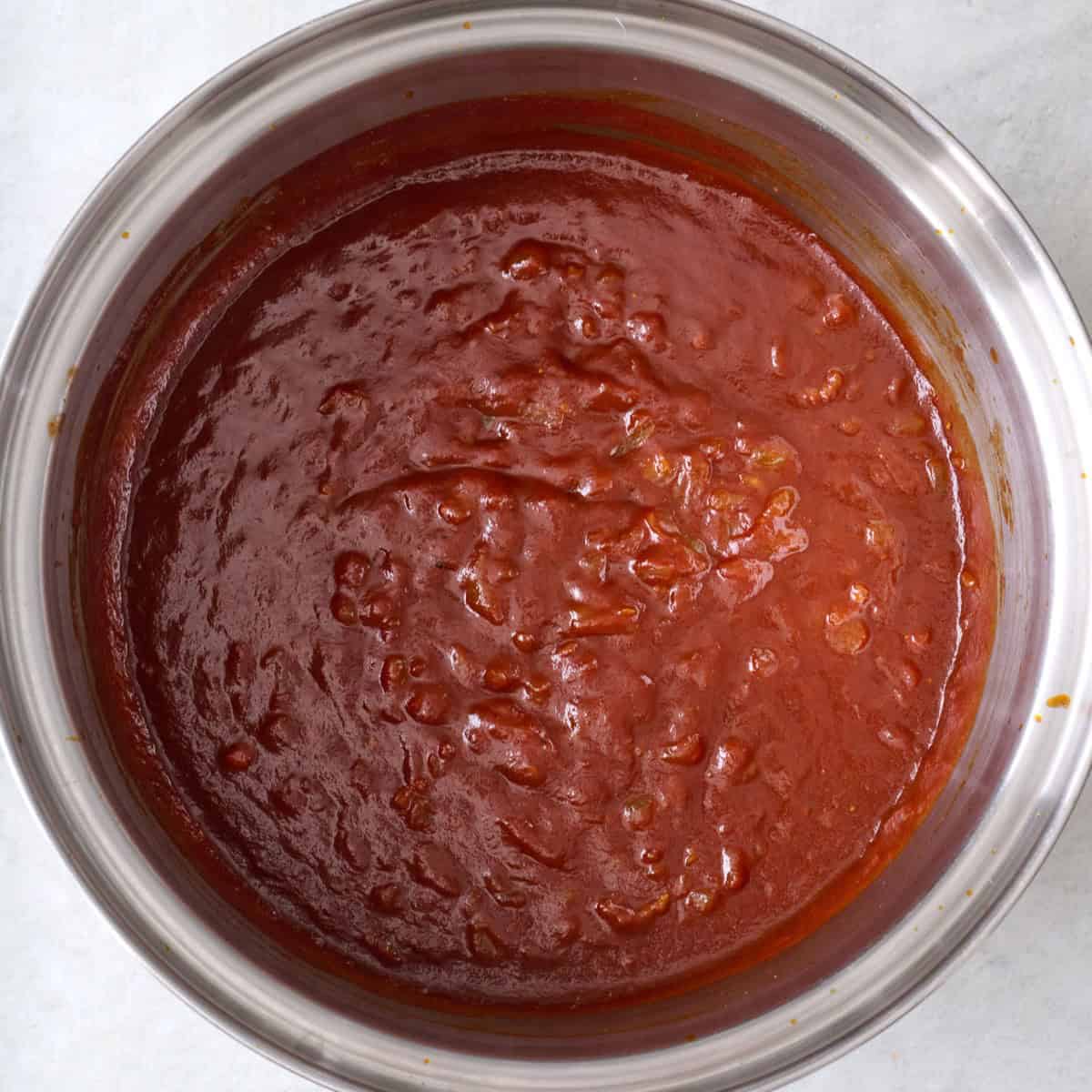
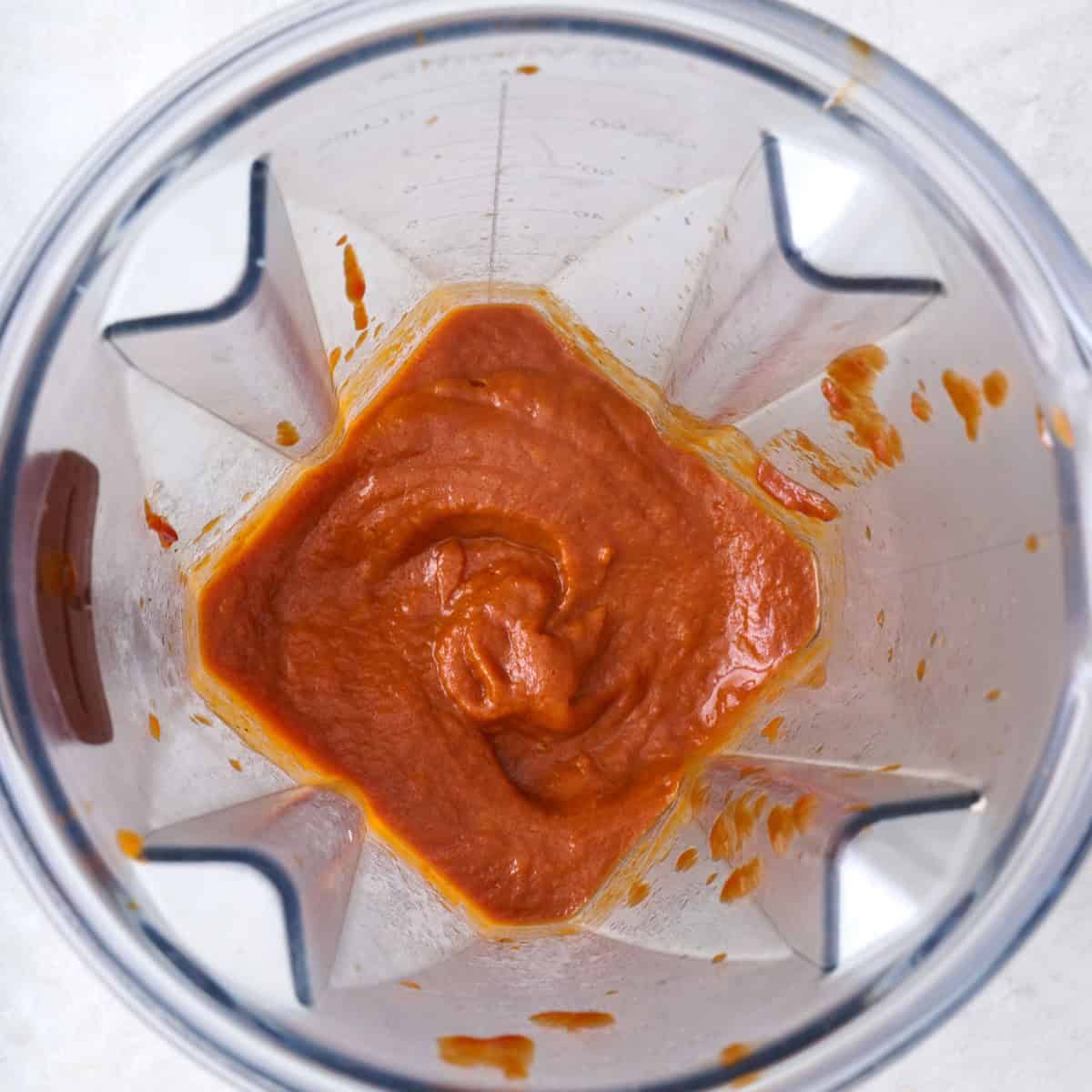
Tips for making the Best Barbecue Sauce from Scratch
- Taste and adjust. I always recommend tasting your sauce as it cooks and adjusting ingredients as needed. Too sweet? Balance with a touch more vinegar. Too tangy? Add another pinch of sugar or a pinch of cayenne to bring some heat.
- Cover the pot. Loosely cover the pot while it simmers because it may splatter. But make sure there’s still evaporation happening so the sauce can thicken.
- Skip the blender. Use an immersion blender and blend directly in the pot to save on cleanup. Just make sure the sauce is nice and smooth, with no chunky onions remaining.
- Give it a rest. For the best flavor, let the sauce rest in the fridge for a day or two before using it to let flavors meld together. Although, I won’t judge if you can’t resist and start slathering it on everything.
BBQ Sauce Variations
- For a Sweet BBQ Sauce, in addition to the light brown sugar, add 1 tablespoons of molasses or honey.
- For a Vinegary BBQ Sauce, add an additional tablespoons of apple cider vinegar to the sauce.
- For a Spicy BBQ Sauce, add two chopped chipotle peppers in adobo to the sauce when you add the ketchup.
Recipes to Make with Homemade BBQ Sauce
Frequently Asked Questions
Store this sauce in an airtight container like a mason jar (best with metal lid and not plastic or bamboo as those are not airtight). Keep in the refrigerator for up to 2 weeks.
Yep! In fact, feel free to double the recipe and freeze a portion so you’re never left without this velvety sauce. Homemade BBQ sauce doesn’t last as long in the fridge as storebought sauces so freezing it is a great alternative to storing it long term. Freeze homemade BBQ sauce in a freezer-safe airtight container for up to 3 months. Thaw overnight in the refrigerator and give it a good stir before using.
The consistency of BBQ sauce is a matter of personal preference, but I want my sauce to be thick but pourable and coat the back of a spoon. That’s how you know it will stick to the meat when brushed on. If you find that the sauce is on the thin side, let it simmer on medium-low heat until slightly reduced. The excess liquid should cook off, leaving you with a perfectly smooth sauce with a nice glaze.
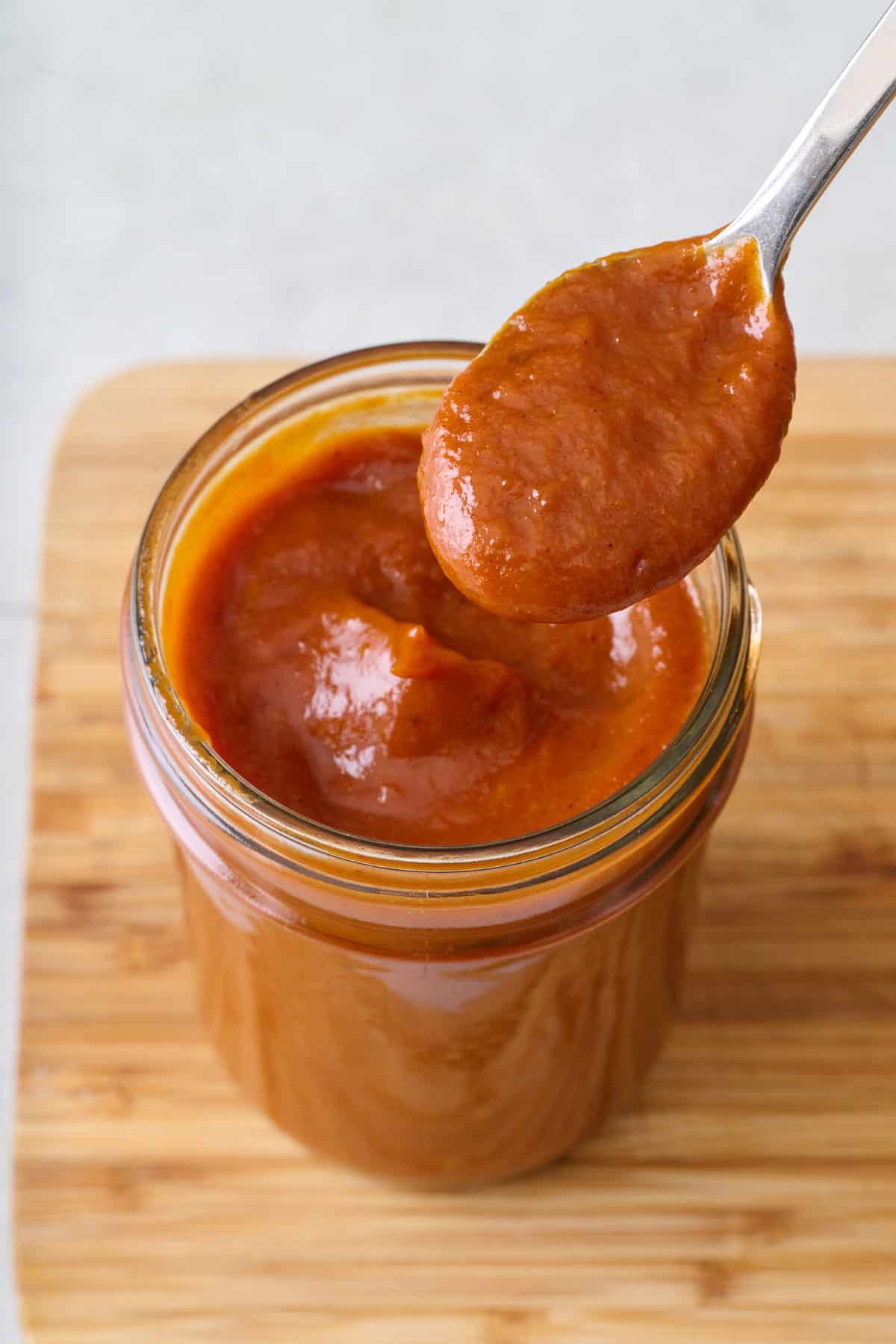
Knowing how to make BBQ sauce at home will change your life. Well, at least, your life in the kitchen. But really, if you haven’t tried homemade barbecue sauce – you’re missing out. Once you go homemade, you’ll never look at a bottled BBQ sauce the same way again.
More Homemade Sauce Cooking Tutorials:
- How to Make Balsamic Glaze
- How to Make Pesto
- How to Make Chimichurri
- How to Make Cilantro Yogurt Sauce
- How to Make Tzatziki Sauce
- How to Make Garlic Sauce (Toum)
- How to Make Tahini Sauce
- How to Make Cucumber Yogurt Sauce
If you found this tutorial for How to Make BBQ Sauce helpful or if you try any recipe on Feel Good Foodie, then don’t forget to rate the recipe and leave a comment below! It helps others who are thinking of trying out this tutorial and we would love to hear about your experience. And if you snapped some shots, share it on Instagram so we can repost on Stories!

How to Make BBQ Sauce
Ingredients
- 2 tablespoons avocado oil
- ½ yellow onion diced
- 2 garlic cloves roughly chopped
- 2 teaspoons smoked paprika
- 1 teaspoon chili powder
- 1 ¼ cups ketchup
- ½ cup water
- 1 tablespoon apple cider vinegar
- 1 tablespoon Worcestershire sauce
- 1 tablespoon Dijon mustard
- ¼ cup packed dark brown sugar
- ¼ teaspoon salt
- ¼ teaspoon pepper
Instructions
- Add avocado oil to a medium saucepan and set over medium heat. Once shimmering, add onion and cook until it begins to soften, about 5 minutes. Add garlic and cook for 1 minute, or until fragrant.
- Add paprika and chili powder, stirring to bloom the spices in the oil. Add ketchup, water, apple cider vinegar, Worcestershire sauce, Dijon, brown sugar, salt and pepper and simmer for 15 minutes, stirring occasionally, or until the sauce starts to thicken.
- Let cool slightly, then process in a high speed blender until smooth.
Notes
- For a Sweet BBQ Sauce, in addition to the light brown sugar, add 1 tablespoons of molasses or honey.
- For a Smoky BBQ Sauce, swap the sweet paprika for 2 teaspoons of smoked paprika.
- For a Vinegary BBQ Sauce, add an additional tablespoons of apple cider vinegar to the sauce.
- For a Spicy BBQ Sauce, add two chopped chipotle peppers in adobo to the sauce when you add the ketchup.
Nutrition
Nutrition information provided is an estimate. It will vary based on cooking method and specific ingredients used.





